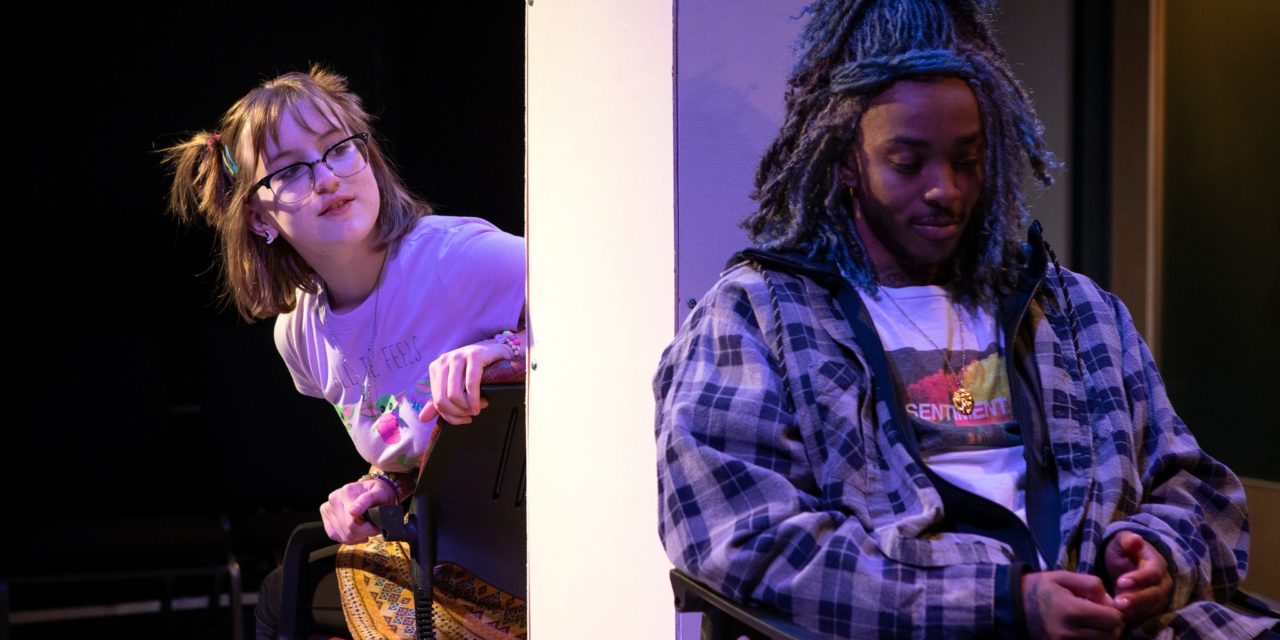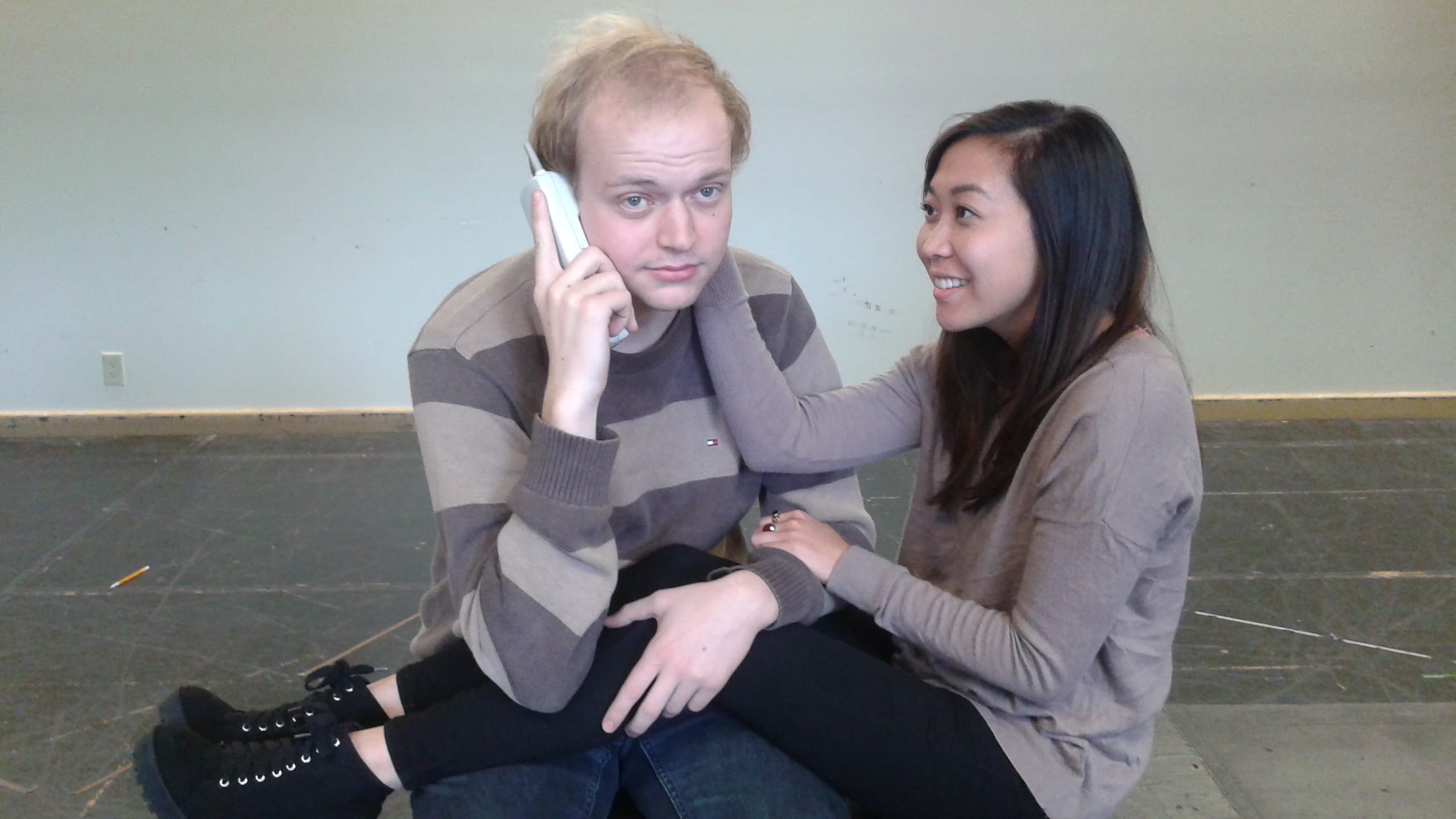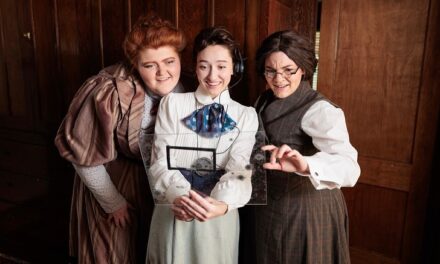OGDEN — Ogden’s own avant-garde theatre group, Good Company, is known for producing underappreciated, thought-provoking theatre pieces, and their latest offering is no exception. Man and Moon, written by Siena Marilyn Ledger, is a quiet, thoughtful, gentle unwrapping of a relationship between two people who seem to have little in common, are thrown together through circumstances out of their control, and ultimately find common ground and connection. It is a lovely story, well-suited for the Good Company’s intimate performance space.

Show closes April 10, 2022.
In Man and Moon, Aaron, a transitioning man (portrayed by Jordan Danielle), meets Luna, a twelve-year old girl (portrayed by Annie Soleil Potter) with a deep passion for outer space, in the waiting room of a hospital’s oncology unit. Together they learn how to wait, navigating each of their own changing bodies and lives, as they fit within the context of space and time.
What this means is the audience gets an up close and fascinating view of a developing relationship between these two characters. Director Emilio Casillas is not afraid to let his actors take the time to mine the depths silence among the sparse dialogue for layers of meaning. Much of the important communication occurs without words. It was intriguing and delightful to watch.
Aaron and Luna do not have much of anything in common. Luna is forever waiting for her mother, who is receiving cancer treatments, while Luna hangs out in the waiting room, clearly very familiar and comfortable in the environment and with the routine. Aaron is closed off and nonresponsive to Luna’s initial overtures of, if not friendship, then perhaps just conversation. Over a series of weeks and months of visits to the oncology unit, the characters peel back the layers of artifice and defense to discover true vulnerability and eventually truth. The actors cast in these roles are lovely, balanced, and believable.
The scenic design by Kristen E Flores made good use of the unique performing space, which includes a large awkward column in the middle of the stage. Instead of trying to ignore it or work around it, she simply made it part of the waiting area and allowed Casillas and the actors to use it naturally, as a defense, a barrier, a support. The audience, seated on three sides of the stage, would mostly have no problem seeing the action, and the one or two moments when my view was blocked were short-lived.
The lighting design by Gary Gabriel White was deceptively simple and subtle, but instrumental in directing the audience’s focus to the next important moment in time and place. I assume that the music choices for each scene transition were selected by sound designer Kyle Lawrence, and I found them both pleasing and haunting at times. The instrumental version of “Boys Don’t Cry” underscored a particularly poignant interlude.
I was a little confused by the costume design at first, but I believe I was trying to make the clothing of too much significance. Why Luna always wore the same outfit of a Baby Yoda T-shirt and leggings week after week, while Aaron’s apparel sometimes changed, was puzzling. For a while I wondered if there would be a Twilight Zone moment of truth where we realize that Luna isn’t real, or something else entirely. But ultimately, I concluded that Luna is a creature of ritual and stability, and Baby Yoda was simply the shirt she wore each week to the hospital with her mother.
Man and Moon is well-executed, with a lovely cast of actors who bring these characters to life with honest insights into the human experience. I would highly recommend Man and Moon to any discerning theatre lover who is looking for a play they can discuss and ponder afterwards. As I left the theater, I wanted to see it again almost immediately because I know I missed some good stuff in this cast’s subtle performances.





